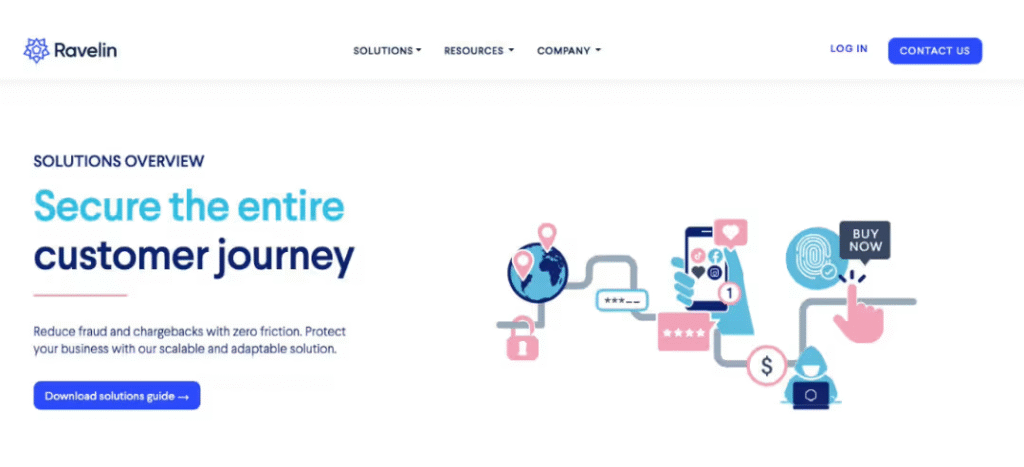Brazil is one of the countries that suffers most from e-commerce fraud. According to a survey by Equifax BoaVista, in August 2025 alone, attempted scams on online stores grew by 66% compared to July 2024.
An anti-fraud system for e-commerce is one of the pillars for maintaining security in any online operation. For those who work with e-commerce, this is a constant concern, as criminals are creating increasingly sophisticated methods to carry out digital scams.
The figures from the 2024 Fraud Map, released by ClearSale, are also striking: 2.8 million fraud attempts were recorded in Brazilian e-commerce, representing a risk of R$ 3 billion in financial losses.
Without an efficient anti-fraud system for e-commerce, your business is vulnerable to attacks that can compromise sensitive data, generate financial losses, and even result in legal sanctions. In addition, failures in protection reduce consumer confidence, directly damaging your reputation.
Therefore, having an anti-fraud solution is essential for identifying suspicious transactions. With that in mind, we will show you what anti-fraud for e-commerce is and how to choose the best tool for your business.
What is anti-fraud?
Anti-fraud systems for e-commerce are digital tools created to identify and block fraud attempts in online stores. Through AI and automated analysis, these systems evaluate each transaction in real time, recognizing non-standard behavior that may indicate a scam.
In e-commerce, where purchases happen quickly and remotely, this technology is essential. In addition to protecting retailers from financial losses, it guarantees consumers a safer space to make their purchases, strengthening trust in the brand.
These features work by continuously monitoring the flow of transactions, cross-referencing data such as purchase history, user location, and browsing profile. This makes it possible to block suspicious transactions before they cause damage.
The main focus is to prevent fraudulent purchases, such as those made with cloned cards or stolen data, which pose risks to both the financial health of the business and the company’s reputation.

How does an anti-fraud system for e-commerce work?
The verification performed by anti-fraud systems for e-commerce works by combining information provided by the buyer, such as their social security number, location, and purchase history, with credit card data and purchasing behavior patterns.
One of the main features of these tools is real-time transaction monitoring. Each payment is analyzed in seconds, considering aspects such as the consistency of the data entered, the user’s geographic region, previous consumption habits, and average purchase amounts.
If something deviates from the expected, the system can take preventive actions, such as requiring additional authentication or immediately blocking the transaction.
With the help of AI and advanced algorithms, each order receives a risk rating. Thus, reliable purchases are released without intervention, high-risk transactions are declined, and those that raise doubts can be directed for manual verification, minimizing friction with legitimate customers.
Imagine, for example, a consumer who usually places orders in Belo Horizonte, but suddenly makes a purchase in another city with a value well above average. This type of situation raises a red flag and may indicate attempted fraud.
For this reason, it is recommended that anti-fraud measures be integrated directly into the payment system. This way, analysis happens immediately, ensuring greater agility, reliability, and protection for both the entrepreneur and the customer.
What is the best anti-fraud system for e-commerce?
To maintain confidence in online sales and reduce risks, anti-fraud systems are indispensable in the digital environment. These solutions were created to analyze transactions in real time, identify suspicious patterns, and protect both merchants and consumers from losses.
Check out some of the most well-known anti-fraud tools and systems for e-commerce on the market and how each one can strengthen the security of your e-commerce business.
1. Appmax
Appmax is a Brazilian e-commerce anti-fraud tool specializing in payments for digital businesses and online stores. Its unique feature is its high order approval rates, reaching around 99%, without increasing the risk of chargebacks.
The platform offers fast checkout, an intuitive interface, and security features based on artificial intelligence. The mobile app allows users to track sales, check balances, request withdrawals, and view performance reports in a practical way.
In addition, it supports various payment methods and prioritizes transparency in customer relations, with an active presence on review sites and support channels.

2. Konduto
Konduto is an anti-fraud tool for e-commerce that combines expertise in e-commerce, payments, and AI to offer a robust fraud prevention system. Its key differentiator is the analysis of user behavior even before the purchase.
As soon as a visitor accesses a website, the solution examines information such as traffic source, location, and even signs of activity on social networks. From this, it generates a score that indicates the customer’s level of trustworthiness and whether the transaction should be approved, reviewed, or declined.

3. ClearSale
Recognized as a leader in the e-commerce anti-fraud systems sector, ClearSale serves companies of different sizes and segments. Its proposal is to balance fraud protection with a high approval rate for genuine customers.
Pricing for services is available upon request, but the anti-fraud system for e-commerce features direct integration and simplified installation for some e-commerce platforms, such as Nuvemshop and Tray.
4. Seon
SEON is an anti-fraud solution for e-commerce that combines real-time analysis and machine learning. It cross-references data from multiple sources, such as social profiles and browsing patterns, to calculate fraud risks for each transaction.
This allows retailers to mitigate risks without compromising the shopping experience, maintaining a smooth checkout process.
5. BigData Corp
BigData Corp’s anti-fraud solution for e-commerce offers flexible contracting and uses dynamic questionnaires to validate user identities. Each access generates new questions, allowing inconsistencies to be identified and increasing the reliability of the analysis.
The anti-fraud system for e-commerce, called BigID, also allows integration via API, complete auditing, and eliminates the need to send documents.

6. Riskified
Riskified’s anti-fraud system for e-commerce uses artificial intelligence algorithms to improve approvals in online stores. By evaluating users’ purchase history and behavior, it reduces the chance of fraud and increases conversions.
The result is a more secure sales process with less friction for the end consumer.
7. Fingerprint
With Fingerprint, each device connected to an e-commerce site receives a unique identification. The tool collects information such as browser, operating system, and browsing patterns, helping to identify suspicious behavior.
This device “fingerprinting” process provides an extra layer of security to block fraudulent attempts.
8. Ravelin
Ravelin’s anti-fraud tool for e-commerce focuses on predictive analytics with machine learning, identifying fraud in real time. Its system examines not only transactions, but also login events and behavior patterns.
This allows merchants to gain detailed insights and adjust their security strategies more accurately.

9. Signifyd
Signifyd offers a unique proposition: it takes responsibility for chargebacks. This means that when a merchant approves a purchase, they are guaranteed coverage in the event of fraud.
In addition, the solution analyzes buyer behavior and transaction patterns, giving merchants more confidence to approve legitimate orders.
10. GetNet
Getnet Antifraude is geared toward digital companies and uses artificial intelligence with more than 260 detection filters. Factors such as geolocation, device identification, and signs of unusual behavior are evaluated.
Another unique feature is its customizable rules and feedback cycle, which allows the system to be “trained” to make increasingly accurate decisions. In addition, it offers 24-hour support and robust infrastructure in Tier IV Data Centers.
Most common types of fraud in e-commerce
To understand the importance of anti-fraud systems for e-commerce, it is essential to know the main types of scams that can directly impact retailers. Here are the most common ones:
Proximity fraud
This type of fraud occurs when someone close to the cardholder uses the data without authorization to make a purchase. Later, upon identifying the charge, the cardholder disputes the transaction, which generates a chargeback. The result: the seller loses both the product and the sale amount.
Intentional fraud
Very common due to data leaks, this practice involves criminals using information from cloned or stolen cards to place orders. As soon as the victim realizes the misuse, they request a chargeback from the bank, leaving the merchant at a loss.
Phishing
In this type of scam, fraudsters create fake websites or send fraudulent messages that mimic official communications from a company. The goal is to trick consumers into providing confidential information, such as passwords or credit card details, which are then used for illegal purchases.
To reduce risks, it is essential to keep your e-commerce site protected with security certificates and to advise your customers about official customer service channels.
Auto fraud
Here, the buyer acts in bad faith: even after receiving the order correctly, they contact the card issuer and claim not to have received the product, requesting cancellation of the charge. In this case, the merchant loses both the item shipped and the sale amount.
Fraudulent return
Some consumers already make the purchase with the intention of returning it. They often use the product before sending it back or even replace the original item with something worthless, such as an empty box or a fake copy. This way, they get a refund and the retailer suffers the loss.
Undue reimbursement
This involves requesting a refund after receiving the order, under the false pretext that the goods never arrived or did not match the order.
Card cloning
Scammers use cloned card information to make unauthorized purchases. When the cardholder discovers this, they dispute the transaction and the merchant bears the loss.
Pix scam
Common in manual transactions, this scam involves sending a falsified Pix receipt. The merchant, believing that payment has been made, releases the product or service, but the amount was never transferred.
How to choose the best anti-fraud solution for e-commerce?
Now that we have presented our list of tools, choosing the best anti-fraud system is no simple task. After all, an extremely strict anti-fraud system may seem like the ideal solution, but there is a dangerous side effect: blocking legitimate orders placed by trusted customers.
This compromises the consumer experience and can lead to lost sales. Therefore, be wary of suppliers who promise to completely eliminate the risk of chargebacks, as this rate never reaches zero in practice.

When choosing an anti-fraud system for e-commerce, also evaluate the service channels offered by the provider and, if possible, seek references from other entrepreneurs who already use the technology. Feedback from those with real experience can help you avoid surprises.
Another important point is to check how the tool connects to your online store and the payment methods you use. If integration is complex or requires constant adjustments, the process can delay operations and increase rework for your team.
Ultimately, the ideal anti-fraud system is not the most expensive one, but the one that ensures a balance between protection, speed in transaction validation, and a good approval rate for genuine purchases. This combination is what really brings return and sustainability to the business.
What are the advantages of using an anti-fraud system for e-commerce?
There are various reasons why the use of anti-fraud solutions is essential within a company. Below, we highlight some of the main benefits that this resource can bring to your business:
Data protection and security
The biggest benefit of implementing an anti-fraud system is protection against digital scams, which are increasingly common in online commerce.
These tools help safeguard sensitive information belonging to both the company and its customers, preventing leaks and reducing the risk of inconveniences such as constant password resets or exposure of personal data.
Strengthening reputation
When consumer privacy is preserved, the company’s image in the market becomes more solid. Information leaks often seriously compromise public trust, driving away customers who no longer feel safe sharing their data with the business.
Better customer experience
When consumers realize that their information is protected, they feel more comfortable making purchases or using services. This results in a higher level of satisfaction, especially in sectors such as finance, where security is a decisive factor in the relationship between company and customer.
Loss reduction
Fraud can generate significant costs, both in terms of direct financial impact and loss of customers.
An efficient anti-fraud system not only prevents this type of occurrence, but also streamlines internal data verification processes, reducing manual errors and increasing team productivity. In this way, investment in technology translates into medium- and long-term savings.
Decrease in chargeback rate
Fraud in online transactions is directly linked to chargebacks, which occur when the cardholder does not recognize a purchase made in their name and requests that the financial institution reverse the charge.
When this rate becomes high, e-commerce can face not only financial losses, but also sanctions imposed by card brands, such as warnings, fines, or even exclusion from the accredited network.
Major operators, such as Visa and Mastercard, have monitoring programs that closely observe merchants with high dispute rates and apply penalties if these numbers remain above the allowed limit.
In this context, the use of an anti-fraud system is essential, as it helps reduce scam attempts and, consequently, keeps the volume of chargebacks under control, preserving the health of the operation.
Greater security for customers
Anti-fraud protection not only protects the online store: it also offers an extra layer of security for consumers. By blocking suspicious purchases made with third-party data, the system prevents personal information from being misused.
This protection reinforces public confidence, improves the shopping experience, and helps your brand be seen as trustworthy and committed to digital security.
More efficient routine for the business
Another important advantage is operational practicality. The analyses performed automatically by the anti-fraud system eliminate the need for manual checks on each order, saving staff time and reducing human error.
In addition, the company now has to deal with fewer chargeback disputes and related bureaucracy, resulting in a more agile and organized sales flow.
Have you found the best anti-fraud system for e-commerce?
We hope this article has helped you understand what anti-fraud systems are and how to find the best platform to protect your e-commerce business.

